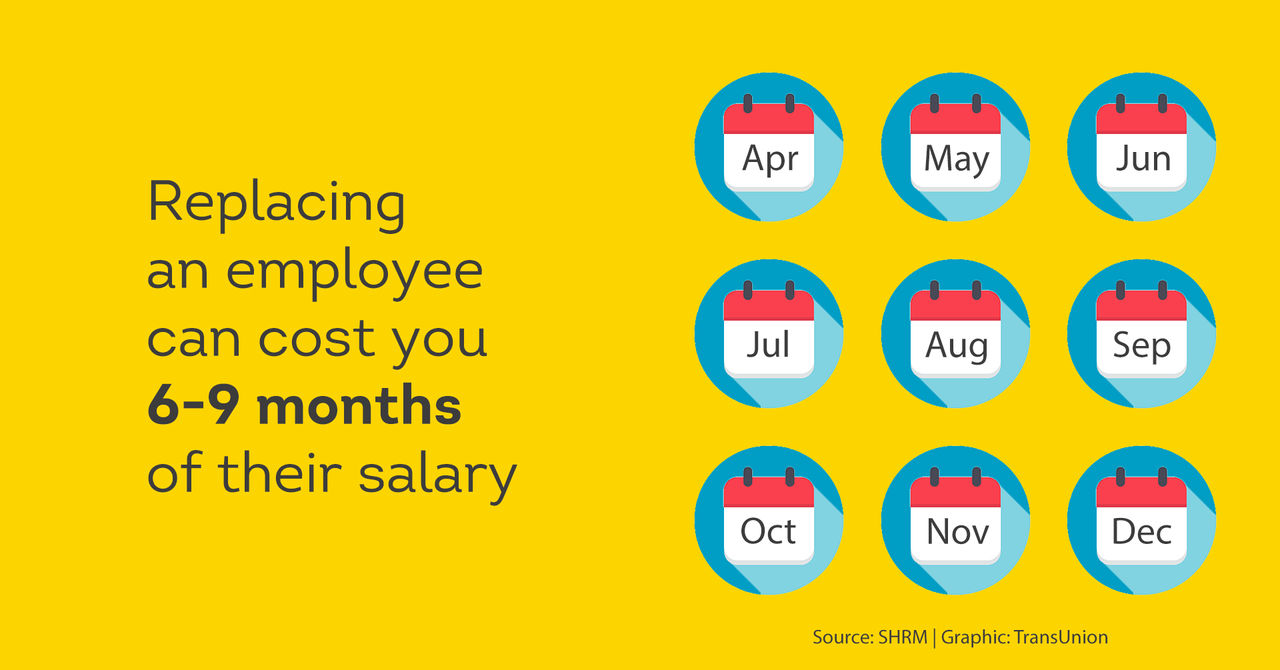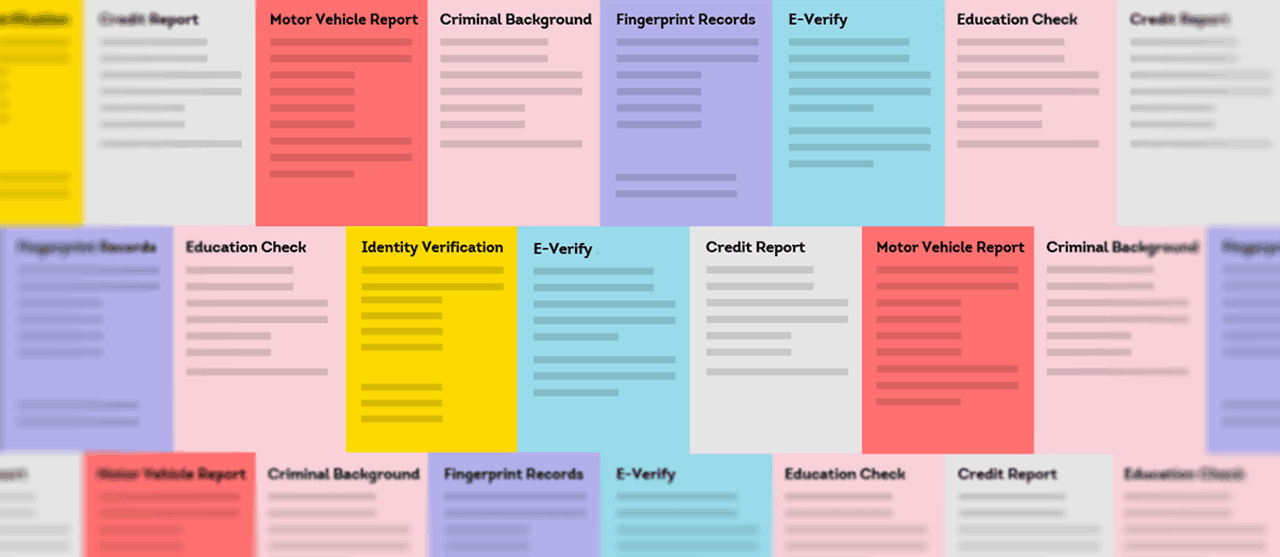Many small businesses don’t have the resources, time or money of larger organizations when hiring new employees. To streamline your hiring, be absolutely sure you need to hire someone new at all. Next, automate as much of the application process as you can and establish minimum criteria that make it easier to disqualify candidates. Then, conduct more efficient and standardized interviews to better identity the best candidates. Thorough online screeningand reference checks will help you get a more complete picture of the applicant. Finally, once you get your new employee in the door, get them settled with sufficient onboarding.
Table of Contents:
Remember that this material is intended to provide you with helpful information and is not to be relied upon to make decisions, nor is this material intended to be or construed as legal advice. You are encouraged to consult your legal counsel for advice on your specific business operations and responsibilities under applicable law. Trademarks used in this material are the property of their respective owners and no affiliation or endorsement is implied.
Introduction
The responsibilities of owning a small business can sometimes feel like stumbling into a hat store and coming out with the whole shop on your head. Between running things, dealing with clients and vendors, keeping the books, and managing existing staff, many small business owners are hard-pressed to find time to commit to hiring any new employees—let alone hiring great employees.
Even so, finding the right people for your organization is absolutely critical. According to financial firm Lending Tree, nearly 50% of small businesses fail within the first five years. What’s more, a surprising 14% of failed companies cited “having the wrong team” as a major contributor to eventually shuttering.
Given that your livelihood is at stake, it’s crucial to make time for a high-quality hiring processes, including great resume review, interviews, reference checks, and thorough screening through a reputable provider like ShareAble for Hires®.
This article explains several helpful tips to help maximize the time, effort, and money you put into hiring, while not sacrificing quality. Streamlining your hiring process can help ease any anxiety that comes with hiring tasks, letting you get back to the job at hand.
1. Attract the Right Candidates and Know What to Look For
Hiring great people for your business needs starts with attracting the right candidates in the most efficient way. Here are some strategies to increase your chances of bringing in the best: Be Absolutely Sure You Need a New Employee. As an entrepreneur, you’ve worked incredibly hard to get your small business up and running—and likely feel eager for extra help and a few more hours of sleep. However, before you go crazy on the classifieds, first take the time to really consider if you actually need to hire. Just because profits are rising and you can afford a new employee doesn’t mean that you should hire one.
First, crunch the numbers. Remind yourself how costly it is to commit to an employee’s salary and benefits. And what if you make the wrong choice? According to the Lynchburg Society for Human Resources Management, replacing a bad hire costs about six months of the departing employee’s salary. Be honest about the value a new staff member would bring to the business and consider alternate solutions.
Many services you might need help with—including marketing, public relations, web design, accounting, manufacturing, and more—can be outsourced at a much cheaper rate than an in-house hire. You can hire freelancers on a short term contract to perform odd end jobs versus a regular hourly or salaried employee.

Write a Great Job Description
Before you start recruiting, know how to write an attractive job description. Having a vague or ambiguous post can lead to your inbox filling up with unqualified inquiries, or cause you to end up wasting serious time with ill-fitting candidates.
Be sure to include information on the company such as its goals and the ideal candidate you’re looking for. List all hard and soft qualifications as well as the expected skills and daily requirements of the role. Share how to apply and if a cover letter or references are required. Narrowing your parameters early on will save you time later.
Pro Tip: Save every job description for each hiring process to shave off time in the future.
Where to Find Job Candidates
Once you’ve determined your hiring need, it’s time to find your next great employee. Your small business might not be able to afford a professional recruiter. Thankfully, there are plenty of free and low cost options for DIY recruitment instead.
Here are a few simple places to start searching for potential job candidates:
Your Personal and Professional Networks: Here the old phrase applies: “It’s all about who you know.” Unlike large companies with a well-known brand and big recruitment budget, small businesses must be nimble. Reach out in person, through a professional social media site such a LinkedIn, via email, or even over the phone. Someone in your network may be able to help you fill an open role or know of a person looking to make a career move. If you are a part of an industry group or local trade organization, also leverage those contacts to help you find talent, too.
Referrals and Rewards for Current Employees: Employee referrals can yield trustworthy recommendations while also instilling responsibility in the existing staff member who brings them on. Providing small rewards, like a small bonus or gift card, can be a good incentive to refer others. Also, don’t forget about internal promotions. Providing a clear path forward with advancement opportunities is one of the top retention strategies to hang on to great employees.
Post Open Positions Online
Some of the top websites to post your job listing on include:
This list includes free classified sites, which are budget-friendly recruitment methods, in addition to subscription-based sites. While you might have to pay a small fee on the latter options, they’re a great way to attract a more serious batch of applicants.
2. Automate Wherever Possible
You don’t have to do everything yourself. Automated technology could potentially help streamline hiring.
Here are a few examples of where you could automate your small business hiring processes:
- Online applications that ask for written responses: You can quickly create an online application form with Google Forms. Ask a few questions to help narrow in on the best candidates before inviting them in for an interview. Each question should correspond to a must-have qualification required for the role in question. Pro Tip: Create a form that can be completed within 15 to 45 minutes.
- Assessments or quizzes: Ask your applicant to complete a job-specific skills assessment or quiz to prove their aptitude. This step ensures you weed out applicants that may have committed resume fraud and exaggerated their abilities. You can also see the applicant’s capabilities immediately. In some circumstances, you could deliver a small case study, mathematical equation, or “what if” scenario based on the position you are hiring for.
- Scheduling interviews: Scheduling interviews manually is extremely time-consuming Instead, use a tool like Calendly that lets interviewees schedule slots automatically, so you can focus on interview questions.
- Pre-employment screening: Once you’ve identified the right candidate, comprehensive background checks are absolutely crucial. You need to know if your potential candidate has a worrying past that could spell trouble for you, your current staff, property, and livelihood.
However, traditional background checks can take weeks to complete, leaving you in an unwanted waiting game. Instead, streamline the process with ultra-fast, online pre-employment screening through ShareAble for Hires. Get reports in minutes without chasing down the necessary information yourself in a risky and potentially illegal DIY background check.
3. Conduct Knockouts and Standardized Candidate Interviews
Once applications come in, it’s time to review resumes. To start filtering through a potentially huge pile, try using the knockout method.
A knockout is a streamlined hiring step in which candidates are “knocked out” or disqualified for failing to meet a barrier, such as an educational or experience level. Establish predetermined minimum qualifications, filter through applications, and objectively eliminate any candidate who’s unqualified. Any knockout qualifications should be included in your job description.
However, just because someone passes the knockout round doesn’t mean they’re qualified. According to business journal Inc., 85% of job applicants “fluff up” their resume. This makes it even more essential to screen candidates. In addition to things like criminal background checks, conduct educational verifications and do reference checks to understand your applicant better.
Interviewing Your Candidates Effectively
Once you have a strong pool, then it is time to schedule initial interviews to verify key information and to get an overall feel for candidates. Conducting initial interviews online or over the phone helps save both you and the candidate time and effort, especially if the person ends up being an obvious “no”.
Keep the conversation short, preferably 15-20 minutes. Be prepared with a list of phone interview questions. Ask everyone the same questions and take notes during the conversation to refer to later. Additionally, use interview scorecards to have a rubric to rate all answers on.
Candidates who move past the phone interview can be invited for an in-person interview. These usually last longer, often a few hours or even a day. Using standardized interview scorecards helps streamline your process, easily compare candidates, and makes the process fairer for everyone involved. Distribute interview questions to a panel of two or three other people on the team that your potential hire would work with directly. If you’re not sure what to ask during the interview, the Balance offers a great list of sample panel questions you can use for inspiration.

Implement Panel Interviews
Instead of a series of 1-on-1 interviews, consider setting up a day in which your candidate speaks to multiple interviewees, either together or in a group. This offers multiple benefits for a streamlined hiring process, including:
- Saving time: Panel interviews free up calendar space for busy managers. Holding meetings with all necessary parties at once, instead of recalling your candidate back for a second or third round interview, can help to get your new hire in more quickly.
- Providing multiple perspectives: Panel interviews allow different points of view. One interviewee might catch something another missed, which allows each person to play to their interview strengths and weaknesses. In a small business, most departments are interconnected, and it’s essential that everyone is on the same page—and will get along with—the new hire.
- Promoting engagement: Inviting an entry-level employee to participate in the hiring process is wise. They’ll know how day-to-day work life actually looks and might be able to come up with some valuable questions. Additionally, asking their input will instill a sense of responsibility and may make them more invested in your small business’s success.
4. Collect References and Know What Questions to Ask
After the interview, take the time to reach out to your candidate’s references. Small businesses should gather at least three points of reference from an applicant. Talking to multiple people can provide a more comprehensive look at your candidate’s past work behavior and general attitude.
However, be warned: many people infuse their reference lists with friends, family members, or acquaintances and may try to mislead hiring teams. Be prepared with strategic questions to ask in a reference check to help learn the truth about your candidate.
5. Provide Excellent Onboarding
Once you’ve found the right candidate, you may feel like your work is over—not quite. You need to onboard your new employee. Onboarding takes a lot of time and can cost $400 per hire according to HROnboard. This price doesn’t even include recruiting or training costs.

It takes time and effort to create, send, and process paperwork, create welcome packs, organize meetings and schedules, and more. However, it is money well spent. Knowing how to successfully onboard new employees sets them up for success. It’s is a fantastic way to boost retention and reduce turnover. To streamline onboarding, digitize your paperwork and scheduling. There are plenty of HR software solutions that can bring all of your administrative tasks into one system with self-access for employees, such as Zoho People or BambooHR.
Additionally, ask your new hire to review these documents in advance so that their first day is spent learning the job, not filling out paperwork.
Help Streamline Your Process with ShareAble for Hires
Operating a small business inevitably means wearing a lot of hats, and sometimes all at once. If you’re not careful during your hiring process, you might just lose the whole stack––and your income along with it. Help streamline your hiring process and protect your small business with lightning-fast, online pre-employment screening through ShareAble for Hires.
Save time and headache. Get FCRA-compliant reports delivered in minutes. Criminal background checks zip through nearly 400 million state and federal records from dozens of agencies to zero-in on matches to your job applicant. Meanwhile, identity checks help confirm your applicant is really who they say they are. Knowing what your top candidate’s past contains can help you make more confident hiring decisions and save you time in the long-run.
If your new hire will manage money or sensitive data, find out about their financial track record before they start with a credit report for employment. Understanding their habits ahead of time is an efficient way to help make sure you’re hiring the right people for your job.
You don’t need the financial resources of a large company to get helpful background checks. ShareAble for Hires is designed for small businesses with only occasional needs for screening, and gives you flexible options mean you pay for only what you need and only when you need it. There are no application costs, subscriptions, minimums, recurring payments, or hidden fees.
Running a small business is always a balancing act. Help assure more steady footing with streamlined employment screening through ShareAble for Hires.
ShareAble for Hires
Sign-up Now. Reports Now. Hire Now.






